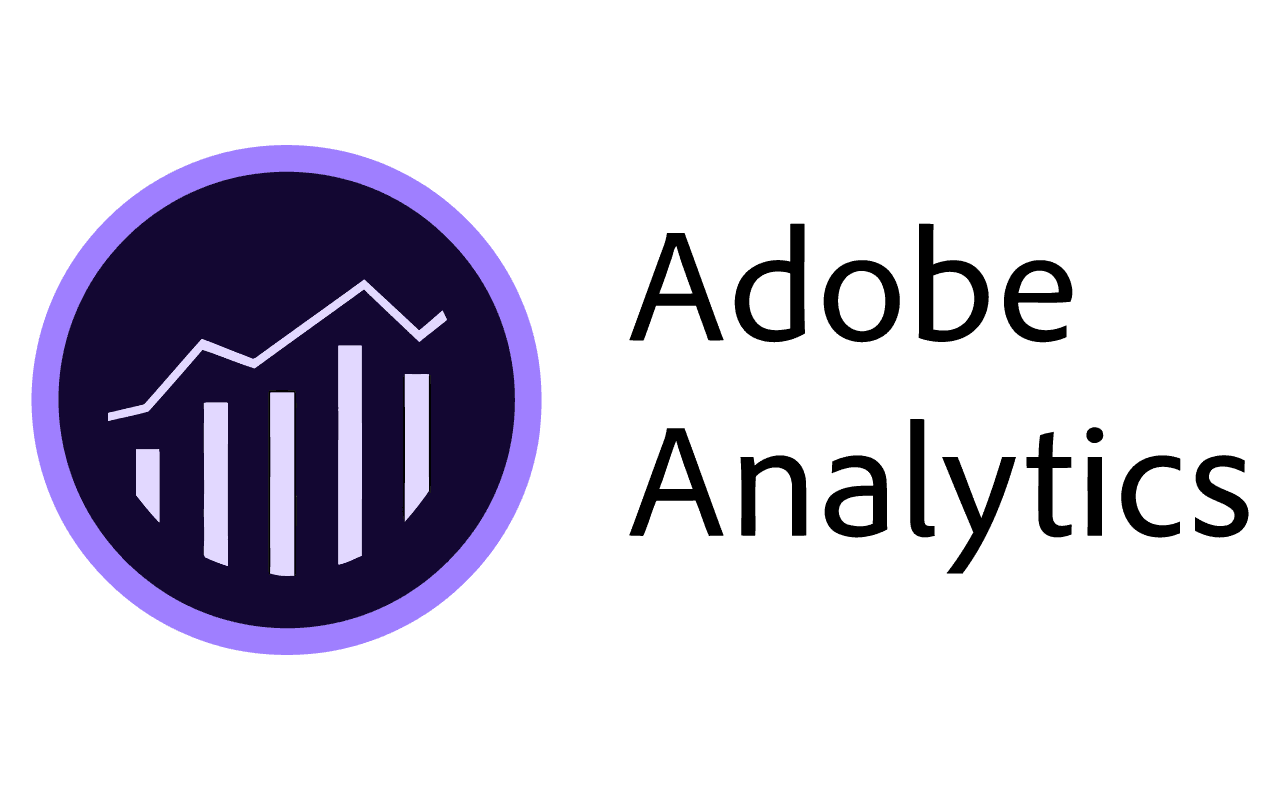In the ever-evolving world of digital marketing, the tools you choose to analyze your data can be the compass guiding your business towards success or the anchor holding you back from achieving your full potential. Today, we’re putting two giants of the marketing analytics realm under the microscope: Adobe Analytics and Mixpanel. Both tools promise to unlock the secrets hidden within your data, but which one is the best fit for your unique business needs? Let’s dive deep into the heart of data analytics and discover which tool will help you navigate the vast seas of digital marketing.
| Adobe Analytics | Mixpanel |
|---|---|
 |  |
| G2 Score – 4.1 out of 5 stars | G2 Score – 4.6 out of 5 stars |
| TrustRadius Score – 8.2 out of 10 | TrustRadius Score – 8.4 out of 10 |
User Interface and Usability: The Gateway to Insights
The user interface (UI) and overall usability of a marketing analytics tool are not just about aesthetics; they are the critical pathways through which marketers access, interpret, and act upon data. In this section, we’ll compare Adobe Analytics and Mixpanel to see how they stack up in terms of providing a user-friendly experience that doesn’t sacrifice depth for simplicity.
Adobe Analytics: The Deep, Data-Driven Ocean
Adobe Analytics is like an ocean teeming with data — vast, deep, and somewhat intimidating at first glance. Its UI is robust and highly customizable, catering to enterprises that require detailed analysis across multiple channels and customer touchpoints. Adobe Analytics offers a comprehensive dashboard, complex segmentation capabilities, and a plethora of reporting features that can slice and dice data in every way imaginable.
However, navigating the Adobe Analytics platform can be daunting for newcomers. Its strength lies in its complexity, allowing users to uncover granular insights that can drive strategic decisions. But this complexity means that there is a steep learning curve. Mastery of Adobe Analytics requires time and dedication, with a significant investment in training to leverage its full potential.
Mixpanel: The Streamlined, User-Centric River
In contrast, Mixpanel takes a more streamlined approach. Designed with user experience in mind, Mixpanel offers an intuitive and clean interface that makes it easy for users to jump right in and start analyzing data. Its focus is on real-time data analysis, event tracking, and building funnels that clearly illustrate the user journey from first contact to conversion.
Mixpanel’s usability is one of its strongest points, making it an attractive option for startups and mid-sized businesses looking for immediate insights without a steep learning curve. The platform provides a range of templated reports and visualization tools that allow users to quickly grasp the impact of their marketing efforts. With Mixpanel, actionable data is never more than a few clicks away, making it a powerful tool for teams that need to move fast and make data-driven decisions on the fly.
Finding the Right Fit for Your Team
The choice between Adobe Analytics and Mixpanel often comes down to your team’s size, skill set, and the specific insights you’re looking to gain from your data. Adobe Analytics offers unparalleled depth for those willing to dive deep, making it a fit for large organizations with dedicated analytics teams. Meanwhile, Mixpanel provides agility and ease of use, perfect for smaller teams needing to act quickly on clear, concise data insights.
Selecting the right tool is crucial for turning data into actionable intelligence that can shape your marketing strategy and drive growth. Whether you’re charting a course through the vast data oceans with Adobe Analytics or navigating the swift data streams with Mixpanel, the goal is the same: to find the insights that lead to success.
Integration Capabilities: Connecting Your Data Worlds
When it comes to marketing analytics tools, the ability to integrate with other software and platforms is not just a nice-to-have; it’s essential. The seamless flow of data between tools can significantly enhance your analytical capabilities, providing a more holistic view of your marketing efforts. Let’s see how Adobe Analytics and Mixpanel perform in the realm of integration, connecting the dots across your marketing ecosystem.
Adobe Analytics: The Hub of Enterprise Ecosystems
Adobe Analytics stands out for its extensive integration capabilities, especially within the Adobe Experience Cloud. It seamlessly connects with other Adobe products such as Adobe Experience Manager, Adobe Campaign, and Adobe Target, creating a unified ecosystem that enhances the power and reach of your analytics. This interconnectedness allows for a smooth workflow, where data from various sources can be easily aggregated, analyzed, and acted upon.
Moreover, Adobe Analytics offers integrations with external platforms and tools, including major CRM systems, advertising networks, and content management systems. This makes it possible to bring together data from across your entire marketing and sales funnel, providing a comprehensive view of customer interactions and behaviors.
However, the complexity of these integrations can sometimes be a double-edged sword. Setting up and maintaining connections between multiple systems requires a certain level of technical expertise and may necessitate additional support from IT specialists.
Mixpanel: Streamlined Integrations for Agile Teams
Mixpanel, on the other hand, offers a more straightforward approach to integrations. It focuses on providing easy-to-implement connections with popular tools and platforms used by startups and mid-sized businesses. This includes integrations with project management tools, email marketing services, CRM systems, and other analytics platforms. Mixpanel’s integrations are designed to be user-friendly, allowing marketing teams to set up and manage connections without heavy reliance on IT support.
One of Mixpanel’s strengths is its ability to integrate with product and development tools, facilitating the tracking of how changes in the product affect user behavior. This close alignment between product development and marketing analytics is particularly valuable for companies that operate on a fast-paced, iterative product cycle.
The Verdict: Balancing Depth with Accessibility
The choice between Adobe Analytics and Mixpanel in terms of integration capabilities depends largely on the complexity of your existing tech stack and the level of integration you need. Adobe Analytics is the go-to option for large enterprises that require deep, comprehensive integrations across a wide range of Adobe products and external tools. Its robust framework is designed to support complex data ecosystems, making it possible to leverage analytics across every facet of the customer experience.
Mixpanel, with its emphasis on simplicity and ease of use, is ideal for smaller teams that value agility over depth. Its integrations are straightforward and focus on enhancing the immediate usability of analytics insights, supporting a more dynamic and responsive approach to marketing.
Ultimately, the effectiveness of your marketing analytics tool comes down to how well it integrates into your existing workflows and enhances your ability to make data-driven decisions. Whether you choose the comprehensive ecosystem of Adobe Analytics or the agile, user-friendly Mixpanel, ensuring a seamless flow of data across your tools will unlock the full potential of your marketing analytics.
Data Analysis and Reporting: The Lens Through Which We View Success
Diving into the capabilities for data analysis and reporting, we uncover the true power of Adobe Analytics and Mixpanel. These features are the bedrock of any marketing analytics tool, determining how effectively a business can interpret its data to make informed decisions. Let’s unpack how these platforms help you analyze and report on your marketing endeavors.
Adobe Analytics: Comprehensive and Customizable Insights
Adobe Analytics is known for its depth and flexibility in data analysis and reporting. It offers advanced segmentation, allowing users to drill down into the minutiae of their data to uncover specific trends and patterns. This tool’s capability to handle vast amounts of data across various dimensions makes it a powerhouse for enterprises that require detailed analysis.
One of Adobe Analytics’ standout features is its customizable dashboards and reports. Users can tailor these to fit their specific needs, focusing on the KPIs and metrics that matter most to their business. This level of customization extends to its predictive analytics capabilities, which use machine learning to forecast future trends based on historical data.
However, the sophistication of Adobe Analytics’ reporting and analysis features can be overwhelming for users who are not data scientists or analysts. The platform requires a significant investment in training to navigate its complexities and extract the most value from its data analysis tools.
Mixpanel: Real-Time Insights for Fast-Paced Teams
Mixpanel takes a different approach, emphasizing real-time data analysis and user-friendly reporting. It excels in tracking user interactions and engagement, providing clear insights into how users interact with your product or website. This focus on event-based analytics makes Mixpanel particularly suited for companies looking to understand and improve the user experience.
The platform offers a variety of pre-built reports, such as funnel analysis, retention reports, and event tracking, that are designed to be intuitive and easy to use. Mixpanel enables teams to quickly identify trends, measure the impact of changes, and make data-driven decisions without needing deep technical expertise.
Mixpanel’s strength lies in its ability to deliver actionable insights promptly. Its dashboards are less customizable than Adobe Analytics, but they provide a straightforward and accessible overview of key performance indicators, making it easier for non-specialists to interpret and act on the data.
Choosing the Right Viewfinder
The decision between Adobe Analytics and Mixpanel for data analysis and reporting will largely depend on your organization’s size, the complexity of your data needs, and the skill set of your team. Adobe Analytics offers unparalleled depth and customization for those who can navigate its complexity, making it an ideal choice for large organizations with dedicated data analysis teams. Its ability to dissect data at an incredibly granular level allows for detailed strategic planning and optimization.
On the other hand, Mixpanel’s real-time insights and user-friendly interface cater to startups and mid-sized businesses that prioritize agility and quick decision-making. Its event-based analytics provide a clear picture of user behavior, supporting rapid iterations and enhancements to the user experience.
In the end, whether you opt for the comprehensive analytics capabilities of Adobe Analytics or the streamlined, actionable insights from Mixpanel, the goal remains the same: to leverage data analysis and reporting to drive your marketing strategy and business growth.

Related: Check out our free SEO suite

Pricing and Value for Money
In the world of marketing analytics, the cost of the tool versus the value it brings to your business is a critical consideration. Both Adobe Analytics and Mixpanel offer powerful analytics capabilities, but they come at different price points and cater to different segments of the market. Let’s break down the pricing structures of Adobe Analytics and Mixpanel to understand which offers the best value for your investment.
| Adobe Analytics | Adobe Analytics does not publicly disclose its pricing, as it tailors costs to each customer’s specific needs. However, it’s suggested that prices can range from $48,000 to $350,000 per year. |
| Mixpanel | Mixpanel provides a Free plan, a Growth plan starting at $25 per month, and an Enterprise plan with custom pricing. |
Adobe Analytics: Tailored Solutions at a Premium
Adobe Analytics does not have a one-size-fits-all pricing model. Instead, it offers customized pricing based on the specific needs and scale of each organization. This tailored approach ensures that businesses pay for the features and capacity they require, but it also means that the entry cost can be quite high, especially for small to medium-sized businesses.
The premium pricing of Adobe Analytics is justified by its extensive capabilities in data analysis, segmentation, and reporting, designed to meet the needs of large enterprises with complex analytics requirements. The tool’s depth, flexibility, and integration with the broader Adobe Experience Cloud suite provide a comprehensive analytics solution that can drive significant ROI for businesses with the resources to leverage it fully.
For businesses considering Adobe Analytics, it’s essential to weigh the potential benefits against the investment required, not just in terms of subscription fees but also the training and personnel needed to maximize its capabilities.
Mixpanel: Transparent Pricing for Businesses of All Sizes
Mixpanel offers a more straightforward and transparent pricing model compared to Adobe Analytics. It provides several tiers, including a free plan with limited features, which is great for startups and small businesses just beginning their analytics journey. Paid plans are based on the number of data points tracked, allowing businesses to scale their use of the tool as they grow.
This clear, usage-based pricing makes Mixpanel accessible to a wider range of businesses, from startups to large enterprises. While it may not offer the same level of depth as Adobe Analytics, Mixpanel still provides powerful real-time analytics, user engagement insights, and customizable reports that can deliver significant value, especially for product and marketing teams focused on improving user experience and engagement.
Mixpanel’s pricing model ensures that businesses can access advanced analytics capabilities without a substantial upfront investment, making it a cost-effective option for companies looking to gain insights into user behavior and drive data-driven decisions.
Assessing Value for Your Business
Choosing between Adobe Analytics and Mixpanel based on pricing and value for money comes down to your business’s specific needs, budget, and how you plan to use the analytics tool. For large enterprises with complex data analysis needs and a budget to match, Adobe Analytics offers a powerful, customizable solution that can provide deep insights across multiple channels and touchpoints. The investment in Adobe Analytics can yield substantial returns for businesses that can fully exploit its capabilities.
On the other hand, Mixpanel offers a flexible and cost-effective solution for startups, small to medium-sized businesses, and even larger enterprises focused on user engagement and product analytics. Its transparent pricing and scalable plans make it an attractive option for companies looking for a balance between powerful analytics capabilities and budget-friendly pricing.
Ultimately, the best choice will depend on evaluating the potential ROI each tool can provide based on your business objectives, the complexity of your analytics needs, and the resources you have available for implementation and ongoing use.
Integration Capabilities: Enhancing Your Ecosystem
When it comes to selecting a marketing analytics tool, how well it integrates with your existing technology stack is a crucial factor. The smoother the integration, the more seamless the flow of data across platforms, enhancing your team’s ability to derive insights and take action. Adobe Analytics and Mixpanel both offer robust integration capabilities, but they cater to different ecosystems and needs.
Adobe Analytics: Deep Integration within the Adobe Ecosystem
Adobe Analytics shines when it comes to integration within the Adobe Experience Cloud. It seamlessly connects with other Adobe products, such as Adobe Experience Manager, Adobe Campaign, and Adobe Target, creating a unified marketing and analytics ecosystem. This integration allows for a comprehensive view of the customer journey, leveraging data from various touchpoints to drive personalized marketing strategies and customer experiences.
Beyond the Adobe suite, Adobe Analytics offers APIs and connectors for integrating with third-party tools, including CRM systems, advertising platforms, and content management systems. However, the focus remains on maximizing value within the Adobe ecosystem, which can be both a strength and a limitation depending on your existing tech stack and needs.
Mixpanel: Versatile Integration with a Broad Range of Tools
Mixpanel, on the other hand, emphasizes its versatility in integrating with a wide array of third-party applications and services. Its focus on product and user analytics makes it a valuable addition to a diverse tech stack, enhancing product development, marketing, and customer engagement strategies across various platforms.
Mixpanel offers direct integrations with popular tools used by startups and enterprises alike, including CRM systems, messaging platforms, and A/B testing tools. This ease of integration facilitates the flow of data across services, enabling teams to trigger actions based on analytics insights directly within Mixpanel. The platform also provides a robust set of APIs for custom integrations, ensuring that businesses can connect Mixpanel with virtually any part of their technology ecosystem.
The Impact of Integration on Your Analytics Strategy
The choice between Adobe Analytics and Mixpanel from an integration perspective largely depends on your existing technology stack and your future plans for it. If your organization is heavily invested in the Adobe ecosystem or plans to be, Adobe Analytics offers deep, native integrations that can unlock significant value, providing a holistic view of your marketing and customer engagement efforts.
Conversely, if your tech stack is more diverse or you prioritize flexibility in integrating with a broad range of tools and services, Mixpanel’s versatile integration capabilities make it a compelling choice. Its ability to fit into various ecosystems allows you to leverage data from multiple sources, enriching your analytics insights and enabling more targeted actions across your product and marketing initiatives.
In conclusion, the integration capabilities of Adobe Analytics and Mixpanel underscore the importance of considering your existing and planned technology ecosystem when choosing a marketing analytics tool. The right choice will enhance your ability to collect, analyze, and act on data, driving more effective marketing strategies and product development efforts.
Training and Support: Empowering Users for Success
The level of training and support provided by a marketing analytics tool is critical, especially as these platforms become increasingly complex and integral to business operations. Both Adobe Analytics and Mixpanel offer resources and support systems, but they cater to their audiences differently, reflecting their product philosophies and user bases.
Adobe Analytics: Comprehensive Training for Deep Dives
Adobe Analytics, with its comprehensive and sophisticated analytics capabilities, offers extensive training and support to help users navigate its complex system. Adobe provides a variety of learning paths, including on-demand tutorials, webinars, and instructor-led training sessions, designed to educate users on both basic navigation and advanced features of the platform. This educational content is crucial for organizations looking to fully leverage Adobe Analytics’ depth.
In addition to training resources, Adobe Analytics users have access to a vast community of users, forums, and dedicated customer support. This ensures that whether you’re facing a technical challenge or seeking advice on best practices, there’s a wealth of knowledge and assistance available.
Mixpanel: Streamlined Support for Agile Learning
Mixpanel, focusing on user-friendliness and agility, offers a more streamlined approach to training and support. Its resources are designed to get users up and running quickly, with a mix of documentation, video tutorials, and live webinars that cover both the basics and more advanced usage scenarios. Mixpanel’s training materials are easily accessible and aim to minimize the learning curve, reflecting the platform’s emphasis on intuitive design and user experience.
Customer support in Mixpanel is similarly user-centric, with options ranging from email and chat support to a comprehensive knowledge base. The focus is on providing quick, effective solutions to ensure businesses can continue to move fast and leverage insights without significant downtime.
Making the Right Choice for Your Team
Deciding between Adobe Analytics and Mixpanel in terms of training and support should align with your team’s needs and how quickly you wish to see value from your investment. If your organization requires a deep, nuanced understanding of customer data and has the resources to invest in comprehensive training, Adobe Analytics’ extensive educational resources and support network can facilitate this depth of use.
Conversely, if your priority is speed and ease of use, with a need to quickly translate insights into action, Mixpanel’s streamlined and accessible support resources can help your team become proficient in the tool without a significant time investment.
Both Adobe Analytics and Mixpanel understand the importance of empowering users through education and support, but they approach this goal differently, reflecting their underlying philosophies and target audiences. Your choice between them should consider not only the current capabilities of your team but also your strategic objectives and how quickly you need to achieve them.
Conclusion
Choosing between Adobe Analytics and Mixpanel for your marketing analytics tool comes down to understanding your organization’s specific needs, your technology ecosystem, and the level of granularity you require from your data. Adobe Analytics offers a powerful, comprehensive solution ideal for enterprises deeply embedded in the Adobe ecosystem, providing detailed insights across customer journeys. Its strength lies in deep data analysis and integration within its suite, supported by extensive training and a robust support system for navigating its complex environment.
On the other hand, Mixpanel serves businesses looking for a more agile, user-friendly platform that emphasizes quick, actionable insights with a focus on product and user engagement metrics. Its versatility in integration and streamlined support make it suitable for fast-paced teams prioritizing flexibility and ease of use. Ultimately, the best marketing analytics tool for you is one that aligns with your strategic objectives, complements your tech stack, and empowers your team to make data-driven decisions efficiently.
Read Next:
- 31+ Top Social Media Management tools Compared! (2023)
- The Science Behind Shareable Content: What Triggers Virality?
- Long-Form vs. Short-Form Content: Which is Right for Your Brand?
- The Power of Personalization in Content Marketing: A Guide to Getting it Right
- Content Marketing in the Age of AI: Opportunities and Challenges





















Comments are closed.